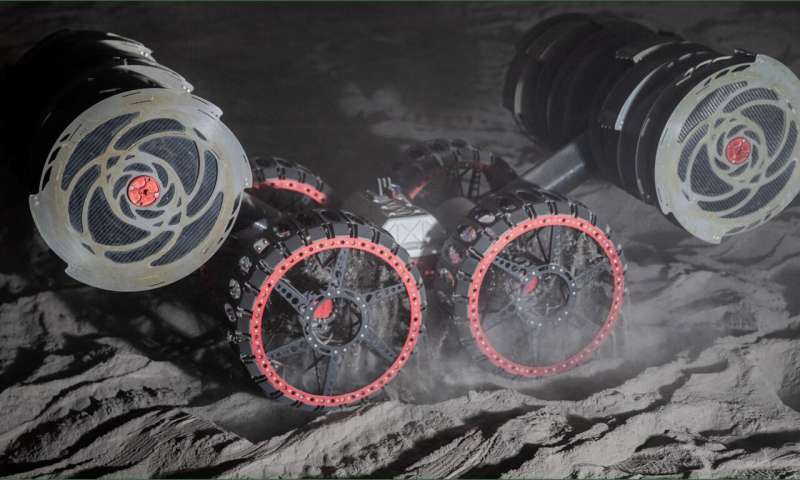Scientists have analyzed how effective bucket-wheel type excavators are at mining soil on asteroids. Similar systems are now being developed for the Moon, but there are serious doubts about their effectiveness in conditions of almost complete absence of gravity.

Multi-bucket excavators in space
The time for humanity to explore the Solar System and mine for minerals on asteroids is getting closer. And now experts from the University of Arizona have released the results of an engineering study of what vehicles are better to use for soil development on small bodies of the Solar System.
The study was published in the materials of the ASCEND conference held in late July. Scientists have paid attention to the fact that now the main machines for soil development in space are excavators. But not ordinary ones, but multi-bucket excavators.
Unlike the usual vehicles that have a single bucket located in a lever system, these have many that are mounted on the rim of a large wheel. Such systems are also known on Earth and are called bucket wheels. They are mainly used where large quantities of soil have to be continuously developed, without regard to energy costs.
What can be used on the Moon and asteroids?
On Earth, their main areas of application are the largest quarries and trench digging. However, NASA is designing similar vehicles for the Moon. For example, the ISRU Pilot Excavator (IPEx) bucket wheel is designed for mining there.
However, similar designs should be considered for use on asteroids as well. After all, rocks on some of them contain much more platinum and osmium than there is on the Moon. And it is quite possible that mining them there is much easier than on the Earth’s moon.
Gravity on asteroids is quite weak, and they themselves are often “rubble pile” type bodies. Even for Psyche, which is considered a metallic body, this may be true. This means that the energy cost of transporting the extracted material may be insignificant, even if the bodies are many tens of millions of kilometers from Earth.
The scientists modeled the operation of an excavator on them and conducted a series of experiments. They showed that it would be better to make the buckets on it larger and use an auger system to transport the material to the storage area, but overall this system would work.
According to phys.org


